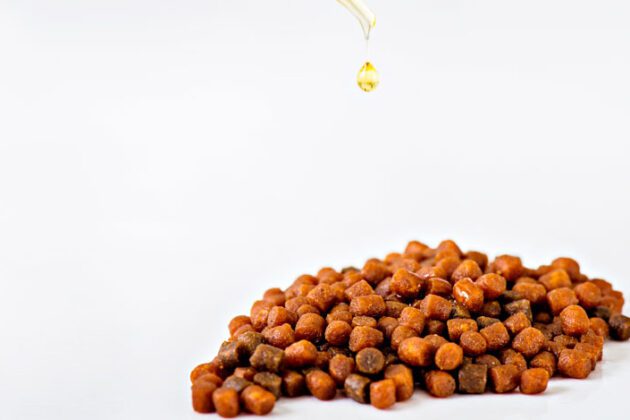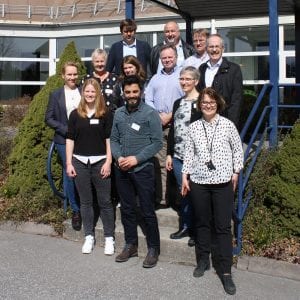OptiHealth
The interaction of fat in feed, the environment and fish health

The goal of OptiHealth was to obtain scientific documentation on the levels of fats and fatty acids that ensure salmon growth and health under challenging environmental conditions in the seawater phase.
Start
01. Feb 2017
End
01. Feb 2020
Funded by
FHF – Norwegian Seafood Research Fund, The Research Council of Norway
Cooperation
NIFES, NIVA, Universitetet i Oslo, BioMar, Skretting (Norge) og Universitetet i Stirling (UK)
Project Manager(s):
Other Participants:
The origin of feed ingredients is an important factor in the sustainable production of Atlantic salmon. Previously, the most important ingredients for salmon feed were fish meal and fish oil. However, in 2013, only 30% of the ingredients were of marine origin, while 70% were from land. This replacement has been necessary, but a lower threshold for replacement with raw materials from land is soon to be expected.
This project will provide knowledge that is necessary for the future salmon industry to be able to safely produce larger quantities of salmon from smaller quantities of marine ingredients without compromising the health and welfare of the fish.
Background

Limited access to fish oil for use in salmon feed is one of the biggest challenges for further growth in the salmon industry. When the level of marine oils in fish feed is reduced and replaced with plant oils, the fatty acid composition in the salmon’s tissues and organs changes. Fat levels and specific fatty acids play key roles in many biological functions, and changes in fat composition in the feed can therefore affect growth, muscle quality and the health and robustness of the fish.
This project took a closer look at areas where there was insufficient knowledge, i.e. the need for omega-3 fatty acids, interaction with total lipid levels in the feed and omega-6 fatty acids for salmon health, especially under challenging environmental conditions.
The project was a result of a joint announcement from the Research Council of Norway and the Norwegian Seafood Research Fund in 2016: Research to generate knowledge about salmon health and welfare through changes in fatty acid composition in feed.
The project consists of four work packages:
WP-1: This package consists of a feeding trial that has the aim of establishing the amount of EPA and DHA that Atlantic salmon require in feed during the seawater phase (in combination with high and low fat levels), and involving the challenges that salmon normally encounter under commercial production conditions.
WP-2: In AP-2, feeding trials will be conducted in land-based tanks where the central research questions are whether n-6 fatty acids and/or n-6/n-3 ratios affect EPA and DHA requirements and robustness of Atlantic salmon, including stress response and susceptibility to gill infections.
WP-3: In AP-3, a feeding trial will be carried out in land-based tanks where studies focus on how the capacity to produce EPA and DHA in Atlantic salmon is affected by the ratio between ALA, EPA and DHA in the feed. Furthermore, interactions between the genetic background of salmon, immune response and omega-3 fatty acid metabolism will be studied.
WP-4: In this work package, a feeding trial will be carried out in Stirling where investigations will focus on whether it is possible to maintain fish health with reduced levels of EPA + DHA in the feed if the level of ALA or total lipid is changed. An important question will be whether the fish farming environment (hypoxia), fatty acids in the feed and lipid levels affect salmon robustness, including chronic stress (hypoxia).
Publications
Research areas